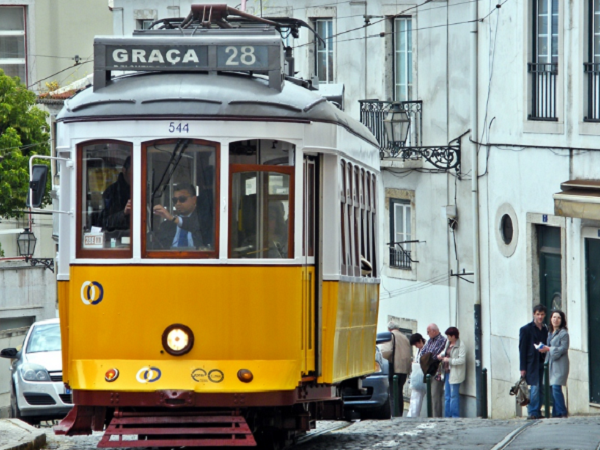The Portuguese Cobblestone
- Catarina

- Oct 1, 2023
- 4 min read
Updated: May 23, 2024
The emblematic Portuguese pavements, which today are a Portuguese symbol of culture and art. Black and white, symmetrical or not, the pavements have shapes and designs that tell the story of an era. When they originated in the mid-1500s, the "Portuguese-style pavements" or "Calçada Portuguesa", as they were known, used granite brought from Porto as a raw material. However, transport made it impossible to continue the work. Later, after the earthquake that devastated Lisbon, the pavements, as we know them today, were built with black and white limestone and laid in diagonally framed cubes. Kings, earthquakes, convicts and even a rhinoceros have played a part in this story, and today we're going to tell you a little more about the Portuguese Cobblestone that enchant everyone who visits Portugal.

Its origins date back to the Age of Discovery, when ships always left their destinations empty and returned home laden with goods and merchandise, so they needed to increase their load to guarantee their stability when sailing, which in maritime jargon is called ballast. The solution was to load these vessels with Portuguese stone.
Once in their destination countries, it was the Jesuits and the military who came up with the idea of applying them to the roads they passed through.
This was the first step towards what would only be called Portuguese pavement in the 19th century, this time on Portuguese soil.
The covering of pavements, squares, pracetas and even the use of these light and dark limestones in works of art, laid in such a way as to create designs, patterns and often in a disorderly manner, are today one of our country's trademark images.
The first Portuguese pavement may seem like a myth, but Portuguese pavements originated because of a Rhinoceros called Ganga. Yes, the story takes place around 1500 when King Manuel I of Portugal received an ornate rhinoceros as a gift from the founder of the Portuguese Empire in the East, Afonso de Albuquerque. The animal was a peculiar event for Lisbon and the whole of Europe at the time, as no rhinoceros had been seen on the continent since the 3rd century. It was the first time a large animal had been seen in these parts since the Romans.

As the rhinoceros became famous in the city, the King took it for a parade during his birthday festivities. However, the giant mammal, weighing almost 2 tonnes, would walk through the streets and end up getting mud all over his feet and the entire committee. The king then ordered the street to be paved with granite stones from Porto for the occasion in order to solve the problem.
The first cobbled street was Rua Nova dos Mercadores, formerly Rua Nova dos Ferros. They began on 20 August 1498 and 8 May 1500 with royal charters signed by King Manuel I. At that time, the material used was granite brought from the Porto region, which was later extinguished due to the difficulty of transporting it.

After the 1755 earthquake that hit Lisbon, reconstruction was reduced to primary and emergency needs, and the Portuguese pavements took a back seat.

A century later, in 1842, the Governor of Arms of the Castle of São Jorge, Lieutenant-General Eusébio Pinheiro Furtado, who was an engineer and knowledgeable in Roman construction techniques, ordered that the square of the Castle of São Jorge be "paved" using white limestone and black basalt stones. The labour used was the prisoners of the Limoeiro jail, known as "grilhetas". This created the first decorative pavement, better known today as Calçadas Portuguesas. The square had a huge carpet with zig-zag shapes that impressed all the locals who passed by. Unfortunately, it's not possible to see this beautiful work today, because with the renovations of the Castle in the 1940s, the pavement was destroyed, leaving no trace of what was once there.

Seen from above, Lisbon's Largo do Chiado resembles a lace rosette. White stone punctuated by black stone, converging in the centre with the statue of the 16th century poet António Ribeiro Chiado and cut out by the tracks of tram 28. It is one of the most emblematic pieces of Portuguese pavement, an integral part of the history of one of the symbols of urbanism in Portugal.
But with the positive impact that paving had left on Lisbon, it wasn't long before new squares were covered in small limestones. Six years later, the important Rossio square was paved under the command of the same military engineer, with 8712 square metres covered in 323 days. The square with the design that simulated black and white waves was named Mar Largo in honour of the Portuguese discoveries.
It was later reproduced on the Copacabana beach promenade in Rio de Janeiro. After several renovations, the Rossio ended up losing much of its covering, leaving only an area around the statue of King Pedro IV. Fortunately, in 2003, the grandiose carpet was redone and retains the grandeur of what it once was. With wave designs that convey optical illusions depending on the viewer's point of view.








Comments